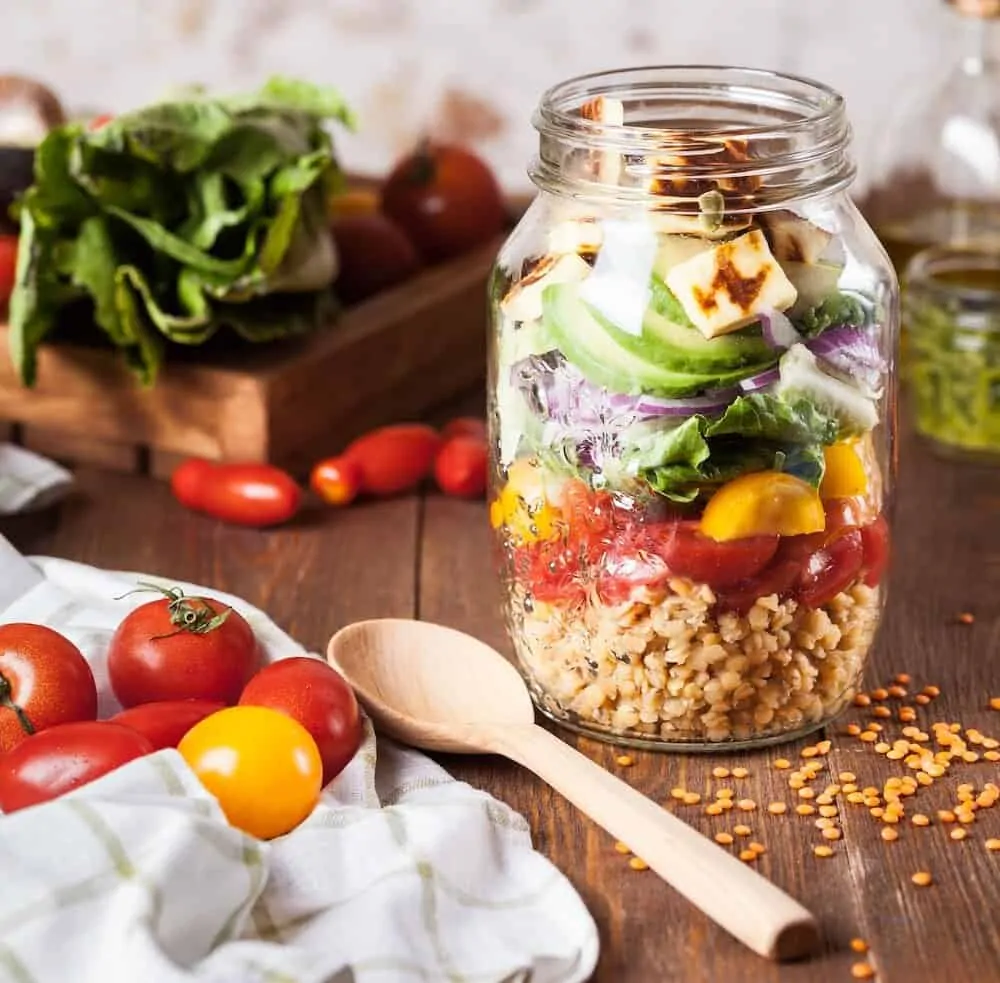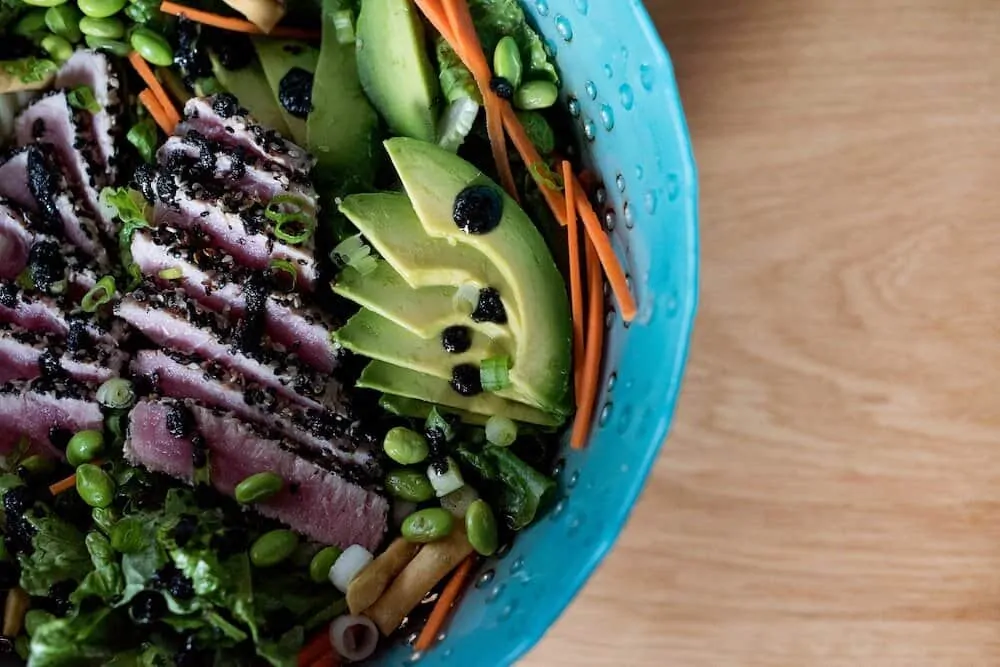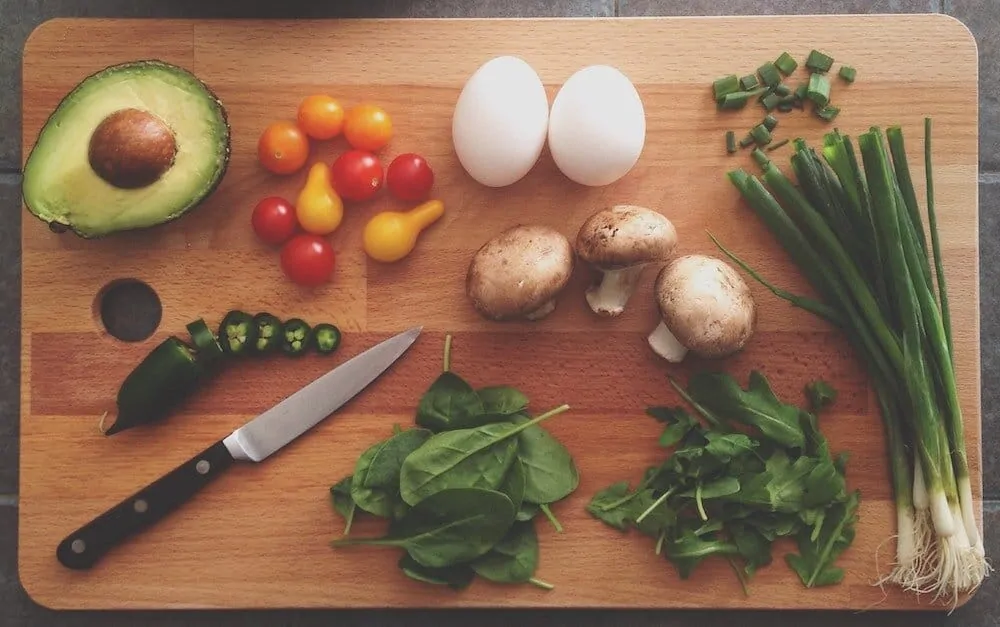What are the best diets for minimalists?
For most people, the term “minimalism” conjures thoughts of decluttering, minimalist style, a streamlined wardrobe, or even digital minimalist practices. One area that can be easily overlooked in the search for simplicity is the concept of minimalist eating. We spend a lot of time, thought and effort choosing, preparing and eating meals. According to landmark studies by the USDA, Americans spend an average of 2 hours and 33 minutes per day eating, and another 37 minutes in food preparation and cleanup. That’s over three of your precious 24 hours each day that are dedicated to food. By applying a few basic minimalist principles to your diet and eating habits, you can streamline this process and reap the rewards of a minimalist diet.

What is a minimalist diet?
Simply put, a minimalist diet is any approach to preparing and eating food that focuses on simplicity. Putting the word “diet” next to anything can be a bit dangerous, as it’s easy for it to become a branded diet with strict rules, books, programs, and fanatic, mostly short-term followers. For our purposes, we will consider a “minimalist diet” any combination of foods, recipes, methods and dietary choices that align with minimalist principles. As part of this approach, there are a few main guidelines to consider.
General rules for minimalist eating
- Create staple meals – the more that you can curate a list of go-to meals that you enjoy, the more time you will save. The goal here is to have five to fifteen meals that don’t take much thought, but you enjoy eating enough that you are happy to have them any night of the week.
- Focus on single-ingredient foods – these are ingredients that can be used across multiple staple meals. If two or three of your staple meals use the same ingredients, it makes shopping, food storage and meal prep much easier and faster.
- Give preference to foods without packaging – “zero waste” is not a requirement, but it doesn’t hurt to think that way when shopping for food. If you can avoid packaged foods for a majority of what you consume, you will cut down on not only the space required to store food but also the amount of trash that you have to deal with. You will also find that these food choices will almost automatically be healthier as you are eating more natural, fresh and whole foods.
- Create very few specific rules – while diets that limit certain food groups usually have drawbacks, it can help with simplicity to have 1-3 important, simple rules. The key is choosing rules that are important to you. Don’t follow rules that someone else recommends unless they align with your life and values. You may choose to cut out meat, dairy, carbs, processed foods, gluten, sugar, maltodextrin, acidic foods, imported foods, non-sustainable foods or any number of categories. The key is to figure out what actually matters to YOU, then choose to eat accordingly. This will help you easily remember your rules and know the why behind them.
- Keep seasonings and flavors simple – focus on a few go-to seasonings that can be used across a wide variety of dishes. Olive oil, salt and pepper are good examples of versatile key players that can do a lot of heavy lifting in your meals. This is often not only healthier, it will encourage you to appreciate the natural flavors in the foods you are eating.
- Organize your kitchen – when you stick to a core set of meals, you will find that you only need a few key pots, pans, utensils and dishes. By streamlining your food preparation, you will be able to declutter your kitchen and keep things simple and organized.
- Don’t stress over it too much – adopting a diet with very strict rules can be great for health and weight loss, but often requires a lot of time, thought and energy to make sure that you’re following it properly. The whole point of minimalism is to create space, not consume it. If any type of diet is creating anxiety or taking too much brain power throughout the day, it defeats the purpose.
I realize that this is not the most prescriptive list. In fact, the beauty of minimalist eating is that you can choose to follow one, two, seven, or zero of those rules and you won’t be wrong. What’s important is to figure out a framework that works for you, then follow it without thinking too much about it. Although, it will take much more thought at the start, over time it will become routine. There are a number of existing diets that fit well with a minimalist lifestyle and can help you put together your own strategy.

Good diets for minimalists
When choosing a minimalist diet, it can be very helpful to follow or draw from existing diets. This is because they already have clear guidelines, books, blogs, articles and people following them that can help you to understand and follow these diets. It is also very easy to find recipes that fit into popular diets.
I recommend that you look at existing diets to determine what you like and dislike about them, then determine how to adapt it to your own needs and preferences. It’s completely fine to make slight tweaks to existing diets to come up with your own approach. Following a paleo diet, but only eating fish or eating plant-based, with the exception of cage-free eggs could be the simple tweaks that allow you to stick to a diet longer and think about it less.
I am not a health practitioner or nutrition professional. I’m giving you some ideas. Please research all of these diets thoroughly before you start making drastic changes to the way you diet. Regardless of diet, making informed decisions about what you eat is the best gift that you can give yourself.
Plant-based Diet
A plant-based diet is aligns great with a minimalist lifestyle for a number of reasons. Whether you choose this for health, sustainability, cruelty-free or simplicity reasons, a plant-based, vegan or vegetarian diet can deliver. It’s easy to follow as there are few rules. Plant-based diets don’t necessarily rule out animal products, but you will be more mindful about what and when you choose to eat them. Vegetarian diets exclude meat, fish and poultry but allow eggs and dairy products. Vegan diets exclude meat, fish, poultry, eggs, dairy products and foods that contain those products.
Ketogenic Diet
A Ketogenic diet, commonly referred to as “Keto” is a fairly restrictive diet that focuses on low-carb, high fat foods. It is built around a specific ratio of carbs, protein and fats to increase ketones. There are a lot of claims that are made around weight loss and health benefits of a keto diet, which you can find just about anywhere by searching.
The reason that a ketogenic diet can be good for minimalists is that it limits or eliminates a number of foods that may be cluttering up your kitchen, meal plan or pantry. On a keto diet, you are limiting sugary foods, starches, fruit, beans, processed foods, condiments, sauces and most alcohol. While this may or may not fit your lifestyle, there are certainly some benefits to cutting down the number of food choices you have. The downside of this diet is that for many people, it requires more planning, thought and preparation to follow.
Paleo
While similar to the Ketogenic diet in the low-carb aspect, the Paleolithic, or “Paleo” allows for more fruits, natural sweeteners and starchy vegetables. The basic premise is that you are eating foods that are presumed to have been available to cavemen during the Paleolithic era. On this diet, you will typically eat vegetables, fruits, nuts, roots and meat while avoiding dairy, grains, sugar, oils, salt, alcohol and coffee. There are a number of variations and tweaks that you can make to this diet. For the minimalist, the general rule of “if it didn’t exist for cavemen, don’t eat it” makes for a pretty simple framework to make choices of what to eat.
Intermittent Fasting
Another popular trend, intermittent fasting can be a great way to simplify your lifestyle. Intermittent fasting is not really a diet in that it doesn’t specify what foods to eat or avoid. It simply gives you guidelines for when you get to eat and when you don’t. There are a number of protocols that you can follow, ranging from 8 hours of fasting up to 24+ hours. There are also methods like the 5:2 diet, in which you consume only 500-600 calories on two non-consecutive days of a week while eating normally on the other five days.
Like other diets, fasting has a lot of claimed health benefits. I’ll let you decide for yourself on those. From a minimalist perspective, intermittent fasting can be beneficial in a few ways. By cutting down on how often you eat, you spend less time thinking about, buying, preparing and eating food. It also can allow for a period of focus and discipline that you may not get with other diets. Intermittent fasting can be performed as its own method of minimalist eating, or you can combine it with another diet framework.
Intuitive Eating
Intuitive eating is one of the simplest possible minimalist diets. Sometimes called the anti-diet, it is really more of a mental shift in food choices. The basic premise with intuitive eating is that you are trusting your own instincts and making food choices that feel good, or right to your body. It rejects the entire diet culture that tells you what foods are “good” or “bad” and allows you to focus on the experience of eating and how it makes you feel.
While it does have some guidelines such as honoring your hunger and respecting your fullness, the idea is to stop stressing about diet choices and simply do what feels best for your body and mind. An intuitive eating approach is great for minimalists who don’t want to adhere to any strict rules, but still want to minimize the amount that they are thinking about food. If you go into it with a general idea of nourishing your body with healthy food more often than not, it can lead to beneficial changes in your health or weight loss, but that is certainly not the focus.
There are a number of books on intuitive eating, but a great starting point is with Intuitive Eating by Evelyn Tribole. While not necessarily using the term “intuitive eating,” Michael Pollan’s In Defense of Food provides a good background and guidelines that can be applied to this diet approach. His simple rule of “Eat food, not too much, mostly plants.” is the ultimate minimalist eating philosophy.

Mindful Eating
A close relative of intuitive eating is another one that fits very closely with the minimalist lifestyle. Mindful eating is basically what it sounds like…cultivating mindfulness around your experience of eating. The core tenets of mindful eating are to listen to your body, focus on the experience of eating, consider where your food comes from and its impact on the world around you and a few others. While there are not a lot of rules when you use this approach, a good place to start understanding it is with Thich Nhat Hanh’s Savor: Mindful Eating, Mindful Life.
Benefits of a minimalist diet
Now that we’ve spent some time defining what a minimalist diet can be, let’s talk about the benefits. Again, I’m not offering healthcare advice or promising you a great body and eternal health. However, crafting your own way to eat according to minimalist principles will more than likely benefit you over time. Here are a few ways that usually happens:
- More time – having a clear strategy for how you handle your diet will save you the time and energy that you spend deciding on what to eat.
- Eating less – this isn’t always a guarantee, but generally, if you are planning meals out, eating whole foods, and giving your body what you need, it’s very likely that you will eat less.
- Having a clear meal plan – when you use less ingredients and have simple meals that you can prepare any time, you won’t have to spend the mental energy throughout the day deciding what to eat.
- Less waste – when you are mindful about buying groceries, storing food and cooking, you won’t need as many types of food around. With clear ideas of what to eat, you will use the food that you buy and have less wasted food at the end of the day or week.
- A less cluttered kitchen – by streamlining what you use in the kitchen, you will be able to eliminate clutter and keep less around because you have a repeatable, consistent process for preparing food that you like.
- Sticking to a diet – rather than following whatever fad diet people tell you about, crafting your own minimalist eating plan will make you less likely to quit. If you create simple rules that you like following, you won’t feel the need to ditch the diet after a few days and move onto another one.

Parting Thoughts on Minimalist Diets
Now that you’ve seen all of the different approaches that you can take to a minimalist diet, it is really your decision how you want to tackle it. As you may notice, I’m hesitant to give prescriptive diet advice, because it really is so unique to the individual. If there are two things that you use from this article, I hope that they are this: keep it simple and make your own rules. You don’t have to follow the same diet as other people. You don’t have to do it perfectly every day. Just be mindful about what you are doing, make simple choices, find a diet you like, and use it.
Affiliate Disclosure: As an Amazon Associate, Minimalism Co earns from qualifying purchases.